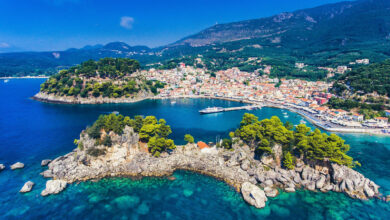St. Lucia is a small island nation located in the Caribbean Sea, known for its lush landscapes, stunning beaches, and rich cultural heritage. Despite its small size, St. Lucia has a lot to offer visitors, with its diverse landscapes, vibrant culture, and rich history making it a unique and captivating destination.
One of the defining characteristics of St. Lucia is its natural beauty, which is characterized by lush forests, rolling hills, and a stunning coastline. The island is home to several national parks and protected areas, including the Pitons, a pair of towering volcanic peaks that are one of the most iconic images of St. Lucia. Visitors can also explore the island’s stunning beaches, including Anse Chastanet, Marigot Bay, and Reduit Beach, which are popular with tourists from around the world.
Another aspect of St. Lucia that draws visitors is its rich cultural heritage, which is reflected in its music, dance, and festivals. St. Lucia is famous for its traditional folk music, which is characterized by its upbeat rhythms and African roots. The island is also home to several important cultural events, including the Saint Lucia Jazz and Arts Festival, which attracts musicians and fans from around the world.
St. Lucia has a long and fascinating history, which has been shaped by centuries of colonization, slavery, and political activism. The island was first inhabited by the indigenous Carib people, who were later replaced by African slaves brought over by European colonizers. Today, St. Lucia is a proud and independent nation, and its history of political activism and resistance continues to shape its cultural landscape.
Despite its many attractions, St. Lucia has faced significant economic and political challenges in recent years. The island has a small and fragile economy, and it has been affected by crime and violence in some areas. However, despite these challenges, St. Lucia remains a resilient and proud nation, with a strong and vibrant culture that continues to inspire and captivate visitors from around the world.
In conclusion, St. Lucia is a small island with a lot to offer, offering visitors a unique blend of natural beauty, rich culture, and fascinating history. From its lush landscapes and stunning beaches to its vibrant music and political activism, St. Lucia is a destination that should not be missed. Despite its challenges, St. Lucia remains a proud and resilient nation and a testament to the enduring spirit of its people.
Best Time to Visit St. Lucia
The best time to visit St. Lucia is from mid-December to mid-April, during the dry season. This period is characterized by warm and sunny weather, with little rainfall, making it ideal for outdoor activities such as beach lounging, hiking, and exploring the island’s attractions. June to November is the rainy season, which can bring heavy downpours and higher humidity.
Average Temperature in St. Lucia
The average temperature in St. Lucia is consistently warm and tropical throughout the year, ranging from 25°C to 32°C (77°F to 90°F). The coolest months are from December to February, with average temperatures around 27°C (81°F), and the warmest months are from May to August, with average temperatures around 30°C (86°F). The island experiences trade winds and sea breezes, which can help keep temperatures comfortable. Humidity is generally high, particularly in the rainy season from June to November.
Credits
Photo: The Pitons, St. Lucia. Photo by: Corinne Kutz on Unsplash



